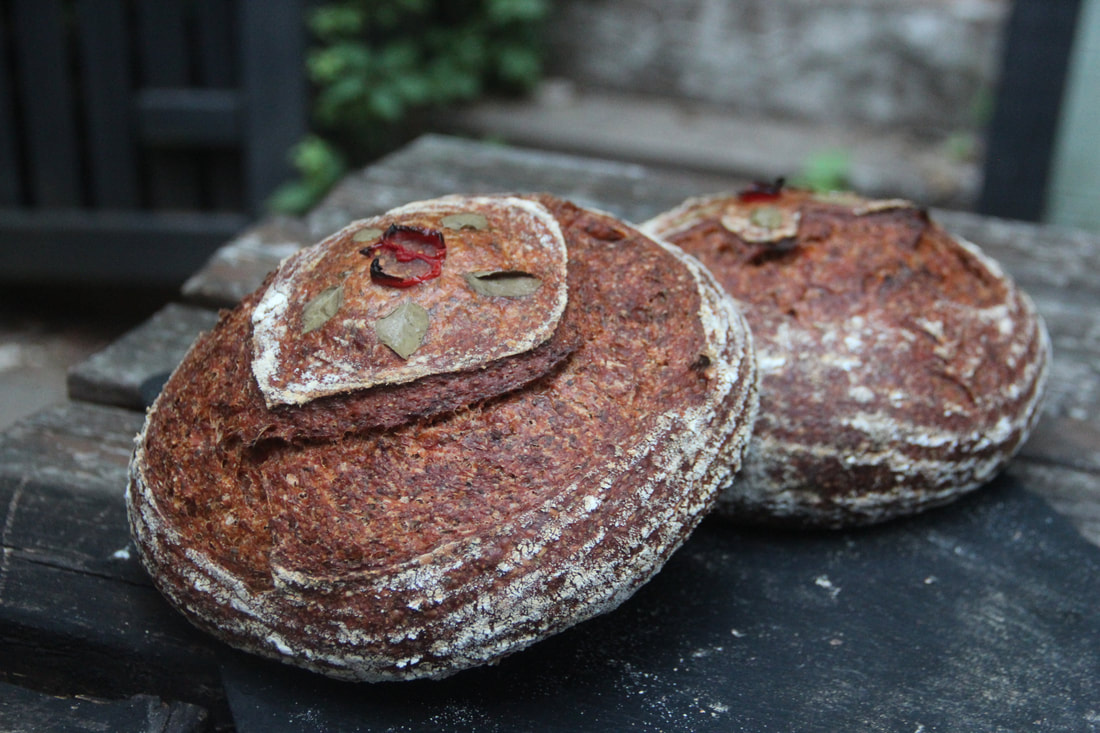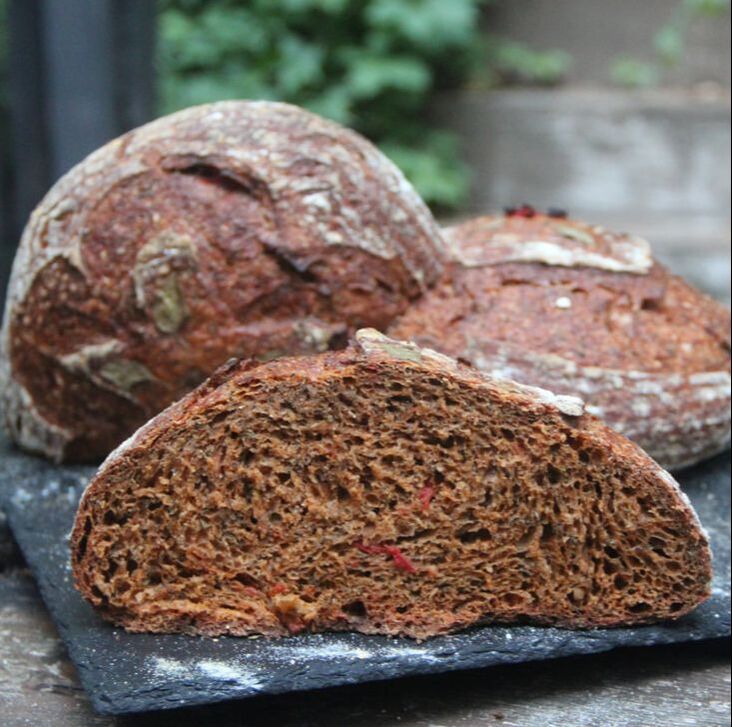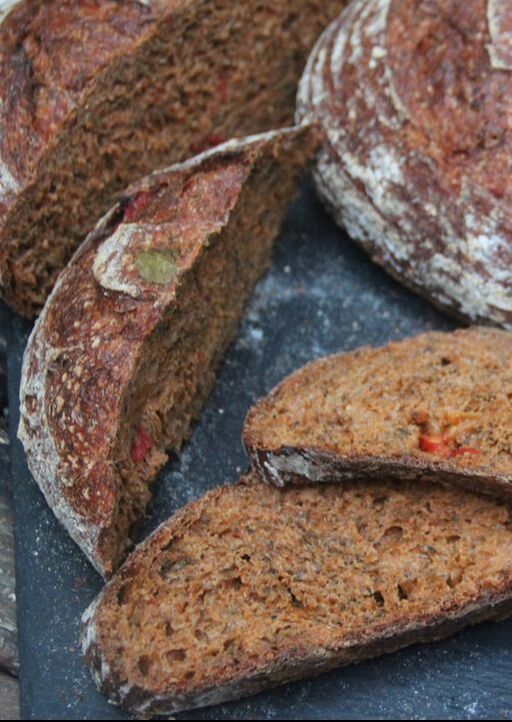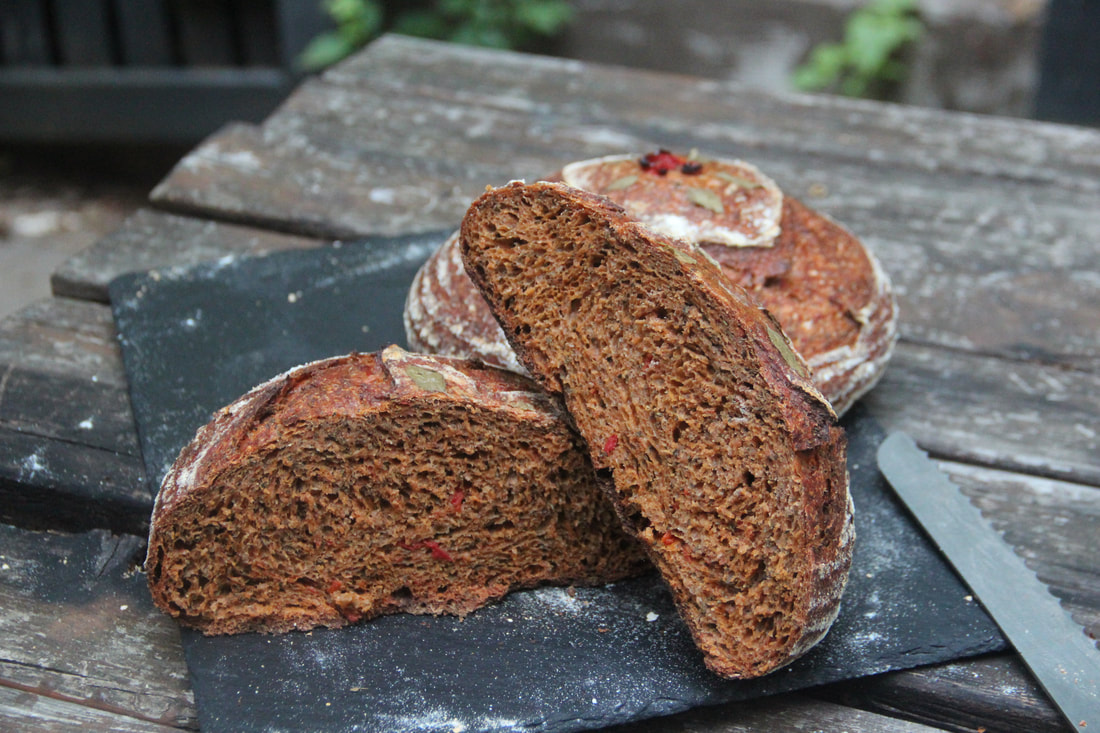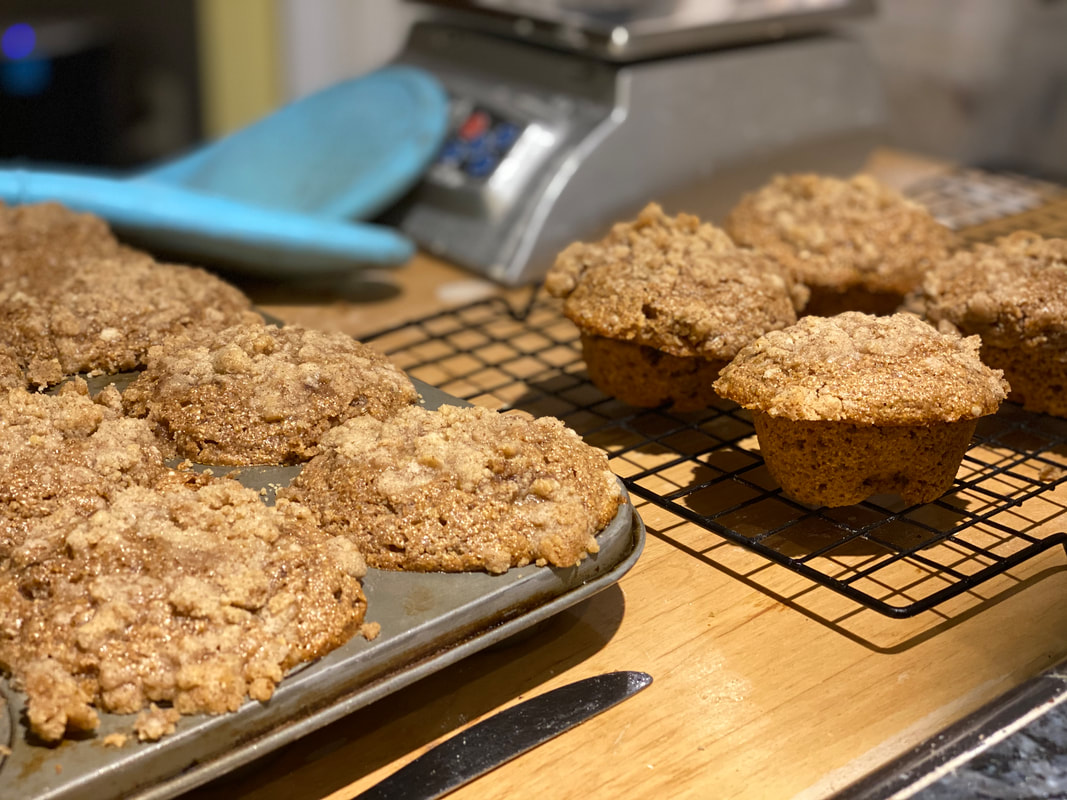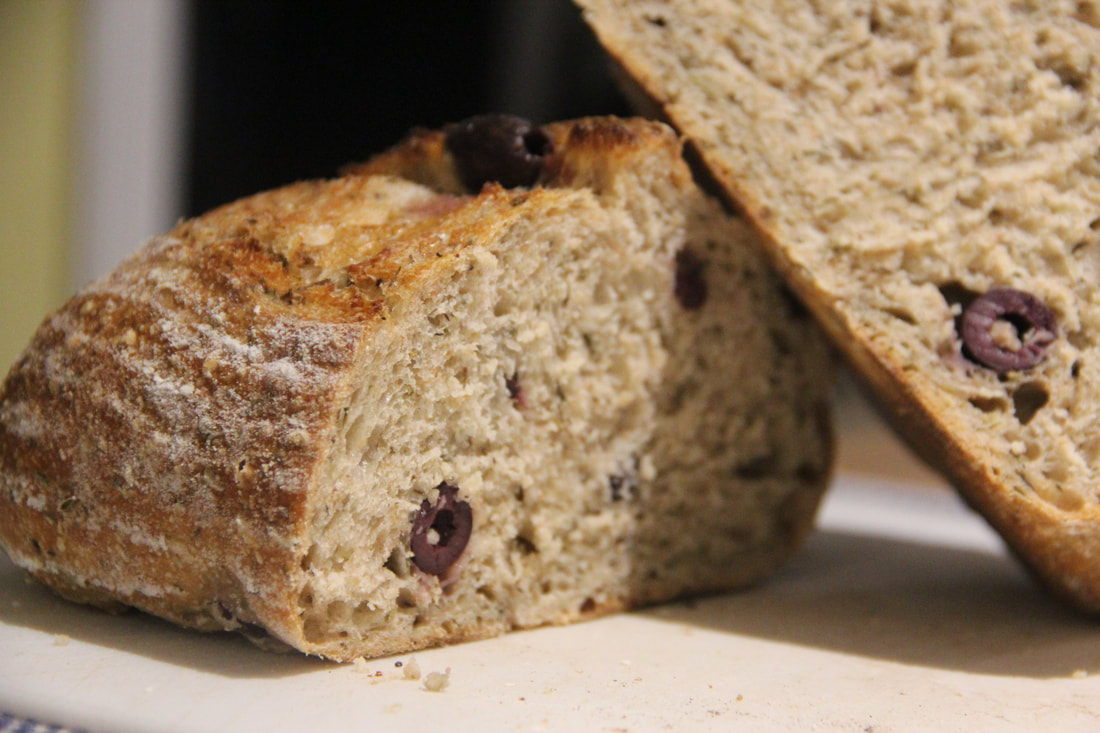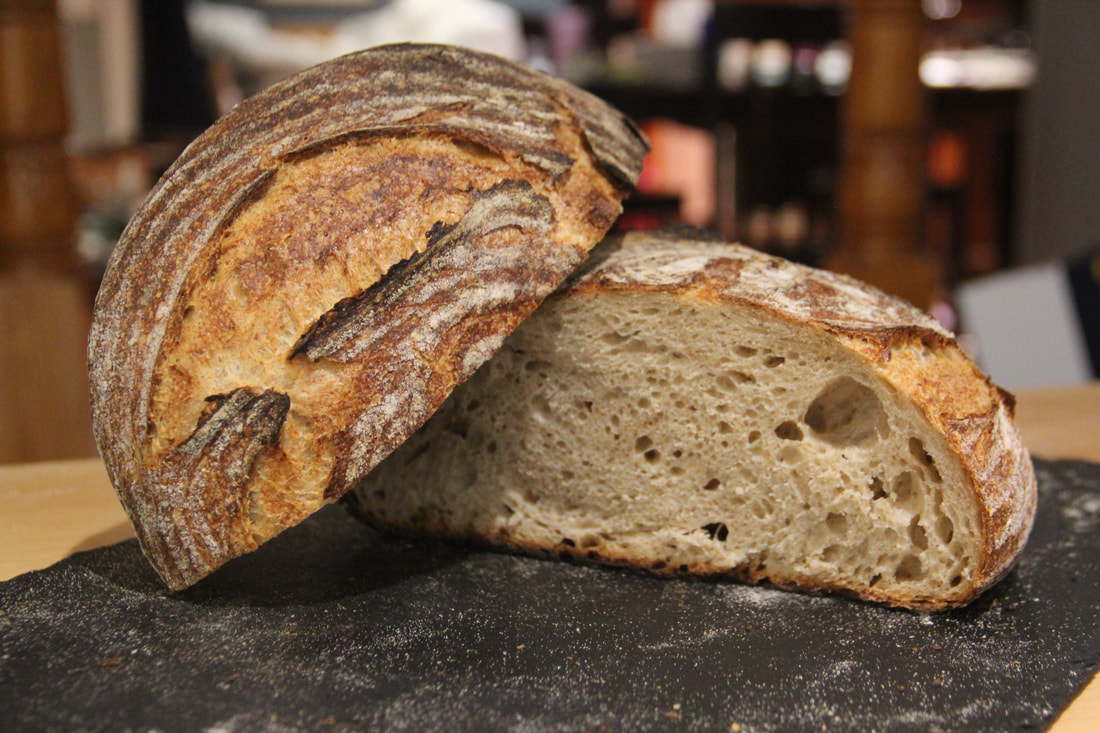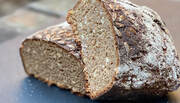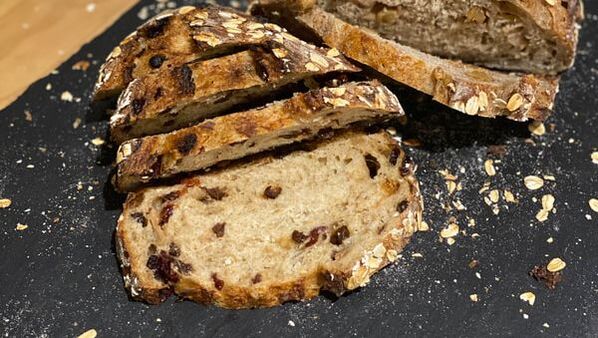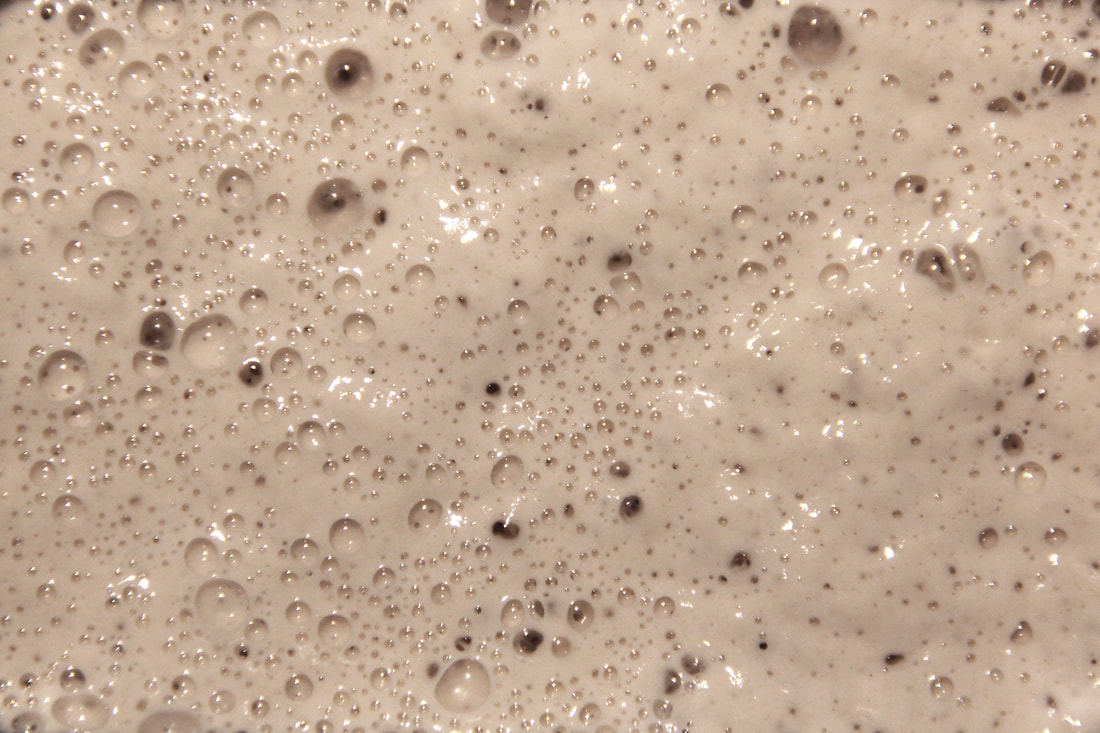|
TOMATO BASIL SOURDOUGH RECIPE This naturally leavened, red-tinged loaf is the epitome of summer. Whole rye gives it a denser crumb and a delicious tang to bring out the acidity of the tomatoes and the freshness of the basil. And paprika gives it a flavorful zing and deepens its natural color. Pair this loaf with some bruschetta or a Caprese salad or even just olive oil and herbs, and you're in for the perfect summer meal. Recipe yields 2 1-kg loaves. TOMATO BASIL SOURDOUGH BAKER'S PERCENTAGES (a universal, slightly more technical way to share recipes that is explained here, but you can also just ignore this)
TOMATO BASIL SOURDOUGH PROCESS
Mix
0 Comments
Leave a Reply. |
|

